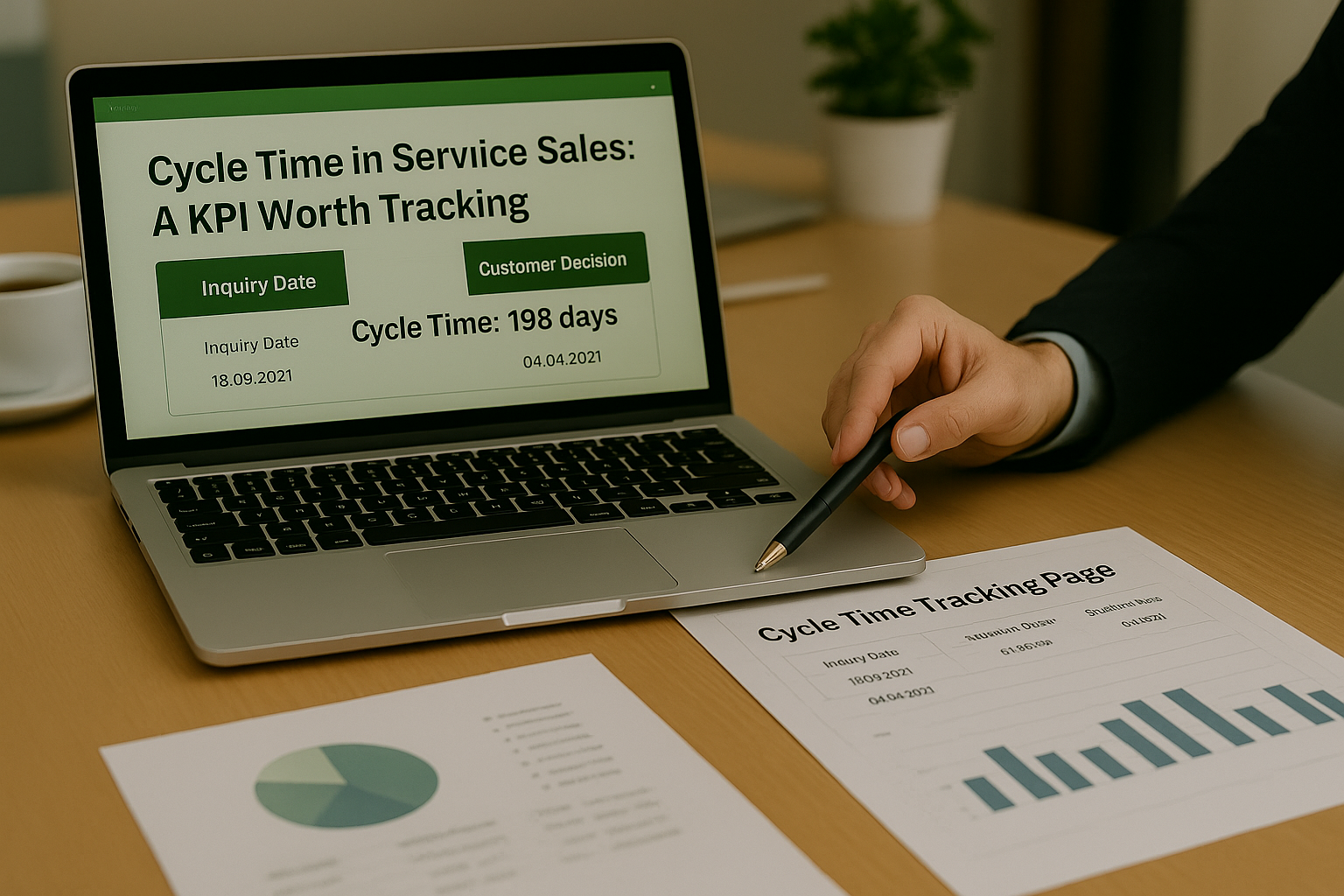The Challenge: Offers Without Follow-Up = Lost Opportunities
Most service sales teams know how many offers they’ve sent. But few can tell how long it takes to get a customer decision. And even fewer know how many offers are stuck without any response.
That’s a problem – especially in aftermarket sales, where timing is critical.
If a quote takes 30+ days to convert, or never gets a reply, it’s not just a slow customer. It’s a gap in the sales process. One that points to unclear responsibilities, weak follow-up, or lack of visibility.
Without measuring cycle time, sales teams are flying blind.
The Insight: Cycle Time = Sales Process Speed and Control
At scope & solve, we work with industrial clients who don’t just want to count offers – they want to understand how smoothly the process runs.
Cycle time tracks how quickly a service request moves from inquiry → offer → customer decision. It helps identify:
- Internal coordination delays
- Inconsistent or delayed follow-up
- Lack of engagement from the customer
- Offers that quietly age without attention
This makes it easier to steer the process, highlight risks early, and focus team attention where it’s needed.
The Fix: Make Cycle Time Measurable
You don’t need a new system – just consistent timestamps. Whether you work in Excel or CRM, start by tracking:
- Inquiry date
- Offer submission date
- Customer decision date (won/lost)
This alone enables:
- Transparency across teams and regions
- Clear identification of stuck offers
- Better follow-up discipline
- A foundation for more accurate forecasting
And when CRM data is incomplete, cycle time becomes invisible – taking control and predictability with it.
The Strategic Insight: Use It to Lead, Not to Rush
Cycle time isn’t about pushing faster decisions. It’s about understanding what’s typical – and spotting when things fall outside the norm.
If teams know their baseline, they can act early. If leaders see delays, they can ask why – and address the root causes.
This KPI doesn’t just report sales behavior. It strengthens it.
Because in service sales, what moves slowly often disappears.
Cycle time brings it back into focus.


